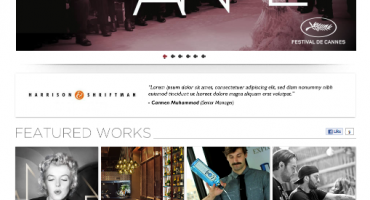The Craft of Manual Testing: How It Ensures Quality in Today's Software Development!

You may believe that in software development, automation is the whole and sole that always grabs the spotlight. However, there’s something to be said about the relevance of manual testing. Even today!
You cannot ignore the importance of manual software testing. It’s particularly true in scenarios demanding human insight and interaction. The integrity, functionality, and user experience of software applications are all greatly enhanced by manual testing.
The Essence of Manual Testing: A Hands-On Approach

As technology moves forward, the question always persists, “Is manual software testing still necessary?”
- At its core, manual software testing is about the hands-on examination of software.
- It involves human testers executing test cases without the use of automation tools.
- This approach allows for a deeper understanding of the application and its nuances, making it possible to identify both visible and underlying issues.
- This approach is vital in identifying usability issues that automated tests might miss.
Manual software testing is about the intuitive investigation of software, revealing nuances that automated scripts can miss, and goes beyond simple verification. Although automation and artificial intelligence are the main topics of discussion when it comes to efficiency in this age of rapid technological advancement, human intervention in software testing is still essential to guaranteeing the dependability, usability, and general quality of programs.
When we dig deeper into the field of quality assurance, it becomes clear that human testers' distinct perspectives and intuitive abilities add a priceless layer to the testing procedure.
1. Exploratory Testing

The exploratory testing approach is a form of manual testing that relies on the tester's intuition, experience, and creativity.
- It empowers testers to navigate the application in real-time, uncovering unforeseen issues, and verifying the user experience.
- With exploratory testing, testers can interact with the program dynamically and respond in real time to what they find, in contrast to scripted testing where test cases are specified.
- This adaptability is particularly useful in settings that promote agile development and in the early stages of development, where it can provide rapid feedback on new features.
- Simulating user interactions with the software is a common practice in exploratory testing.
- To find any possible usability problems, testers dive deep into the application like end users would, pressing buttons, navigating menus, and entering data.
2. User Interface (UI) Testing

UI testing, which includes user experience testing methods, is crucial in ensuring that the software is not just functionally sound but also user-friendly.
- UI testing verifies that an application's graphical user interface runs smoothly, complies with design guidelines, and ultimately offers end users an easy-to-use interface.
- UI testing is more than just looking things over. It entails verifying how users interact with the application and ensuring all elements are responsive, functions make sense, and the overall design meets user expectations.
- Manual testing of the UI helps in understanding the aesthetic and ergonomic aspects of the software, which are difficult to gauge using automated tests.
3. Usability Testing

Usability testing services in manual testing focus on the software's ease of use.
- Testers try to understand the user's experience to ensure the software is intuitive, easy to navigate and meets user expectations.
- Beyond functional testing, usability testing is a user-centric method of software evaluation.
- Usability testing makes sure that users can complete their tasks within the application.
- It looks at how well users succeed in finishing particular tasks and getting the results they want.
- Usability testing measures user satisfaction in addition to task completion.
- By sharing their overall experiences, participants help developers understand how gratifying and pleasurable the software is.
4. Ad Hoc Testing

Ad Hoc testing is an informal testing process without any specific plan or methodology.
- Understanding ad hoc and exploratory testing difference is crucial in software testing. Ad hoc is a totally unstructured testing method and is useful in finding random defects and relies heavily on the tester's experience and knowledge of the software while exploratory testing, although not based on test cases, follows a systematic approach to discover bugs.
- Ad Hoc Testing enables testers to use their imagination, expertise, and gut feeling to find unexpected problems and improve the overall stability of software programs.
- As they move through the application, testers make spontaneous choices based on their knowledge and instincts.
- Ad Hoc Testing offers insights into how the software functions in real-world scenarios by mimicking real-world usage.
- This aids in improving the software's ability to satisfy user expectations.
- Ad Hoc Testing works best in environments that prioritize agile development.
- Owing to its adaptability, testers can easily investigate newly developed features and quickly adjust to changing requirements.
Collaboration and Communication in Manual Testing

Collaboration and communication in Manual Testing are crucial. Manual testing is not just about finding bugs; it's also about effective communication and collaboration. Testers need to communicate their findings clearly and collaborate with developers to ensure that issues are understood and addressed efficiently.
Manual testing involves a dynamic dialogue between the tester and the software rather than just running test cases. This conversation also includes testers, developers, and other stakeholders working together. Because they are aware of the context, manual testers can communicate issues clearly and give developers useful information.
Flexibility in Testing: Adapting to Change

One of the significant advantages of manual testing is its flexibility.
Why is manual testing flexibility crucial?
- Manual testing flexibility helps quickly adjust to changes in functionality, requirements, or design, in contrast to strictly automated scripts, without the need for extensive script updates.
- Successful testing strategies can adapt and remain flexible, especially in the dynamic field of software development where change is the only constant.
- Testing teams need flexibility to navigate the constantly shifting waters of requirements, technologies, and user expectations.
- Testers can modify test cases quickly, investigate unanticipated situations, and offer qualitative input that goes beyond prewritten scenarios.
- Test planning ought to be flexible enough to change as the project progresses.
- Testing activities are guaranteed to be in line with the development team's present priorities and objectives when test planning is flexible.
- Testers must keep up with the latest developments in testing methodologies and technologies.
- Testing teams are guaranteed to remain adaptable and capable of taking on new tasks through ongoing education and skill development.
Difficulties and Solutions: The Human Aspect

There are manual testing disadvantages too!
Subjectivity
Subjectivity, human error, and the potential for oversight are examples of inherent risks. However, thorough planning, thorough documentation, and a collaborative testing culture minimize these challenges and allow manual testing to reach its full potential.
Manual software testing has a unique set of difficulties that can affect productivity and efficacy. The human element adds variables like subjectivity, weariness, and possible mistakes.
Subjectivity can be introduced into the testing process by testers' perspectives, biases, and interpretations, which can have an impact on the consistency of the results. Establish thorough standards for test documentation. Define test cases, expected results, and acceptance criteria precisely to create a structured framework that guarantees consistent testing and minimizes uncertainty.
Manual testers frequently have to perform repetitive tasks, which can get boring and make them more prone to making mistakes because of attentional slips. To reduce monotony, assign testing responsibilities to team members in rotation. To free up testers' time for more intricate and imaginative aspects of testing, think about automating monotonous and repetitive tasks.
Managing Time and Workload
Manual testing can be time-consuming depending on different workloads, which may result in issues being missed. Tests should be prioritized according to important features and possible hazards.
Use timeboxing and other productive time management techniques to make sure that important tasks get done in the allotted amount of time.
Lack of Clear Communication
Misunderstandings can arise from inadequate communication among testers, developers, and stakeholders, which can postpone issue resolution and reduce the efficacy of the testing process.
- Encourage an environment of candid dialogue.
- Assemble testers and other project stakeholders for frequent meetings, feedback sessions, and cooperative discussions.
- Efficient channels of communication improve comprehension and enable timely resolution of issues.
Managing Test Data
Managing test data can be difficult, particularly when sensitive or large datasets are involved.
- When handling sensitive data, employ good test data management techniques, such as using synthetic or anonymized data.
- Provide precise instructions for managing test data to guarantee its accessibility and applicability to testing scenarios.
Skill Variability
Since manual testing depends on the knowledge and expertise of individual testers, testing methods and levels of thoroughness can vary.
- To improve the abilities of manual testers, make continuous training program investments.
- To establish a baseline level of expertise among team members and standardized testing procedures, promote knowledge sharing among members of the testing team.
Handling Unexpected Scenarios
Testers may run into unexpected situations that aren't covered in the pre-written test cases, so they'll need to be flexible and quick-witted.
- Encourage the practice of exploratory testing.
- Give testers the freedom to look into unanticipated situations; this will inspire creativity and intuition in spotting problems that may go unnoticed in scripted tests.
Get in touch with our QA experts today to explore how our expertise can elevate your project's testing strategy, ensuring robust, user-friendly, and high-quality software. Let's collaborate to bring your software visions to life with the precision and care they deserve.

Emotional Intelligence in Project Management

Qualities to Become a Good Software Tester


